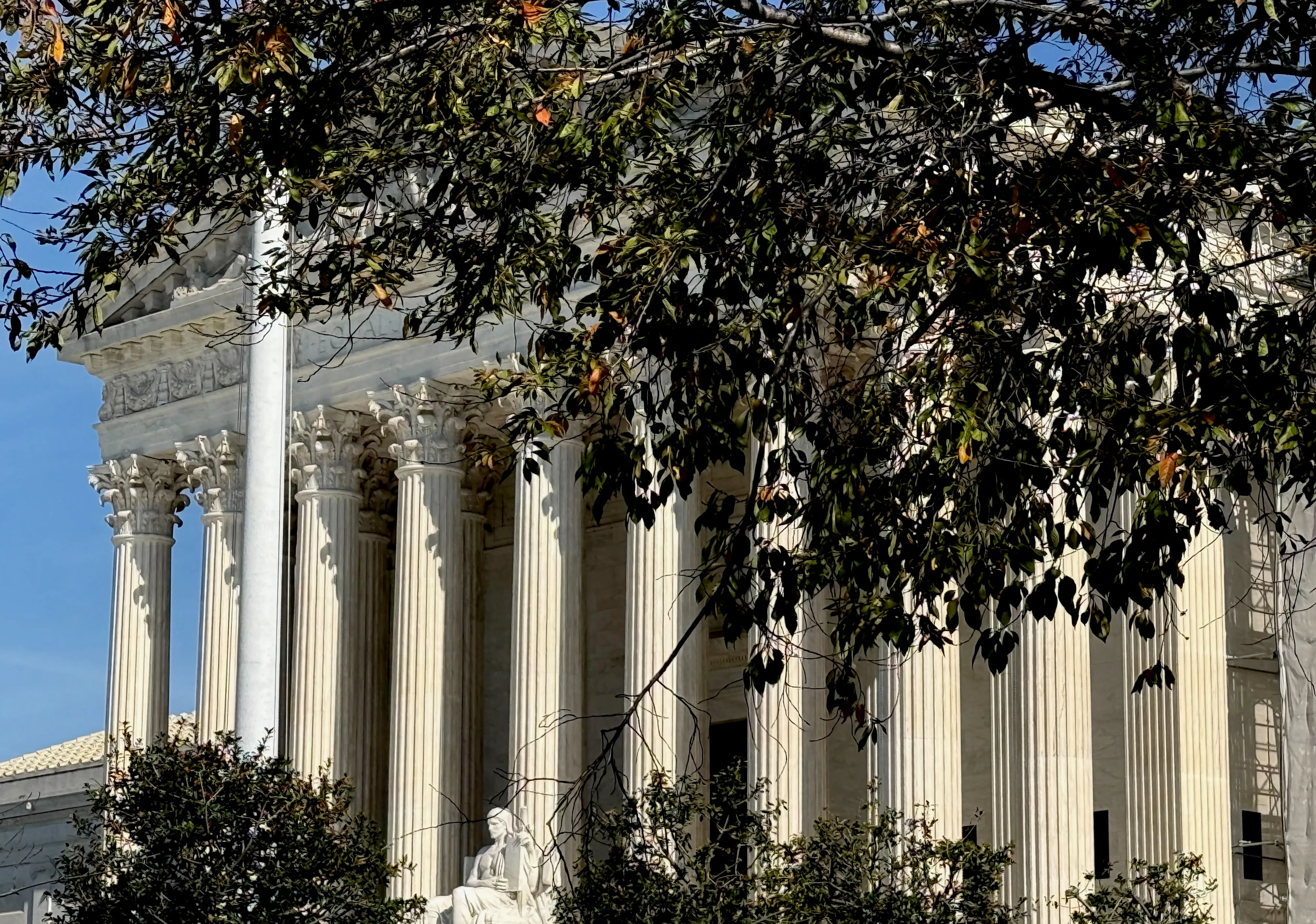The wrongheaded religious freedom narrative


Rights and Responsibilities is a recurring series by Richard Garnett on legal education, the role of the courts in our constitutional structure, and the law of religious freedom and free expression.
It is still (very) early in the Supreme Court’s new term, and its calendar is far from full. The justices and their law clerks will consider thousands more requests for review and, notwithstanding the recent trend of declining caseloads, will probably grant a few dozen more. That said, and unlike the last few years, it does not appear that the story of what court-watchers call October Term 2025 will feature landmark, lead-the-news religious-freedom controversies. In fact, so far, there is only one church-state case, Landor v. Louisiana Department of Corrections and Public Safety, which is set for oral argument next month.
Landor involves compelling facts and bad-acting prison officials, but it is not the kind of “culture war” case that, for better or worse, captures social-media clicks. The question presented is a technical one, involving the interpretation of a federal statute known by the awkward acronym RLUIPA. In a year of disputes over birthright citizenship, voting rights, presidentially imposed tariffs, and – don’t forget! – misdelivered mail, controversies about whether this particular law authorizes money damages in suits against government employees might well get overlooked. Still, Landor is important, and it will tell us a lot about the state, and future, of the American experiment in religious liberty under law.
In a nutshell: Damon Landor is a Rastafarian and, as part of his religious exercise, he did not cut his hair for nearly 20 years, instead growing long dreadlocks. At the beginning of his five-month prison term in Louisiana, prison officials accommodated him and his hair and, indeed, the relevant federal appeals court had previously ruled that Rastafarian inmates are legally entitled to such solicitude. But then, with just a few weeks left before his release, he was transferred to a new facility, where a guard and warden threw Landor’s copy of the court decision “in the trash,” handcuffed him to a chair, and shaved him bald.
This abusive conduct clearly violated the Religious Land Use and Institutionalized Persons Act (again, RLUIPA), a bipartisan religious-freedom statute that Congress passed by unanimous consent in 2000 and that, among other things, prohibits governments from imposing unnecessary “substantial burden[s]” on prisoners’ “religious exercise.” After his release, and armed with a strong court precedent in his favor, Landor sued the prison officials for money damages. According to the lower courts, though, RLUIPA does not authorize this remedy because it does not count as “appropriate relief.” Several judges on the court of appeals wrote powerful dissents, and the Supreme Court agreed to take the case.
Landor should and almost certainly will win. (Disclosure: The author joined several other legal scholars in filing a “friend of the court” brief in support of Landor.) For starters, the court has already ruled, unanimously, just a few years ago, that RLUIPA’s elder-sibling and role-model statute, the Religious Freedom Restoration Act, does authorize such a remedy and that money damages may be “appropriate relief.” Contrary to the lower court’s reasoning, there is nothing about the fact that Congress relied on its so-called “spending power” to enact RLUIPA that compels a different rule or result here. What’s more, to say that prisoners whose legally protected religious-freedom rights are violated cannot pursue money-damages remedies is, in the real world, basically to say they cannot secure relief at all. The lower court’s cramped reading of RLUIPA, which makes obvious and deliberate violations cost-free, would undermine – indeed, it would gut – the statute’s aims and effects.
So, Landor should serve up another religious-freedom win at the Supreme Court, even if it is unlikely to deliver the drama, or fit within the narrative, preferred by the commentariat. But what is that narrative? Generally speaking, they have embraced, and doggedly push, a narrative about the Supreme Court’s religious-freedom docket and church-state decisions: They are, the story has it, polarized and partisan, close and contentious, divided and divisive. Sometimes, like broken clocks, this account is accurate. Recent rulings in hot-ticket disputes about praying football coaches, religious-school funding, and sex-and-gender lessons in young kids’ classrooms tracked the standard storyline, and reflected – like so many things today – the familiar Red v. Blue split.
It is worth remembering, though, how many important religious-liberty cases have defied this script and that the justices are regularly unanimous, or nearly so, in upholding both the constitutional and the statutory right to the free exercise of religion. Not only have some of the more progressive justices occasionally declined to join colleagues’ stricter-separationist opinions, the court has often presented a united front in defense of what President Bill Clinton called “our First Freedom.” Just last year, the Catholic Charities case – which invalidated a Wisconsin tax provision that discriminated among religious denominations – was unanimous. So was 2023’s Groff v. DeJoy ruling, which rejected a longstanding, but cramped, reading of the workplace-religious-accommodation provision of the 1964 Civil Rights Act. As was 2022’s decision in Shurtleff v. City of Boston, holding that the city violated the First Amendment’s free speech clause by censoring Christian expression; and Fulton v. City of Philadelphia, decided the year before, in which the justices agreed that officials had unlawfully targeted an adoption agency because of its religious commitments. The Roberts Court’s body of work provides many more examples.
Another prevalent misconception of the commentariat is that the protections for religious freedom provided in our statutes and constitutions are there to benefit the “majority” and overlook or neglect the needs and interests of “minorities.” And, to be sure, there are examples in our history of indifferent or hostile majorities ignoring or even persecuting those with unfamiliar, esoteric, or challenging beliefs or practices. Some coverage of the Landor case has proceeded on the premise that there is something unusual or surprising about the fact that the case is likely to result in a court-consensus vindication of a Rastafarian, as opposed to a Methodist or Baptist. But, again, the real story of America’s longstanding and ongoing religious-liberty experiment is not one of majority-service or of protecting the particular and parochial interests of, say, the Protestant establishment. After all, generally speaking, in a democracy, the majority can take care of itself. The key players in the relevant Supreme Court cases and political advocacy campaigns have been Jehovah’s Witnesses, Seventh Day Adventists, and Native Americans; Sikhs, Santeria, and Latter-Day Saints. What’s more, even when – as has been the case in some recent cases – the claimants are “conservative” or “traditional” Christians, it is far from clear that they are part of, or enjoy the support of, a supposed Christian majority. America today is far too pluralist, diverse, and divided for that.
Yet another mistake that is too common among journalists and partisans is thinking, and complaining, that religious-freedom claimants are simply “conservative” foot-soldiers in our various “culture wars.” Too often, religious freedom gets the “scare quote” treatment in coverage and commentary, suggesting that the writer and the expected readers suspect that claimants’ invocations of their fundamental right to religious freedom is disingenuous or tactical, that it is really about something else, about “weaponizing” a right to advance discriminatory animus or economic self-interests. But recent controversies about a government mandate that Catholic nuns provide abortion-drug coverage to their employees, or a conflict between regulations that ban sexual-orientation discrimination and people in the business of selling creative products, or parents’ objections to public-school lessons about gender fluidity are the outliers. Far more common than cases about neuralgic “social issues” are low-temperature, but still crucially important, disputes about, say, whether Amish people can drive their horse-drawn buggies on public roads, or whether an observant Muslim or Sikh can wear a head covering in a driver’s-license photo, or whether a prisoner can be accommodated with Halal or Kosher food. As a team of prominent legal scholars have shown, the “conservatives and culture wars” account of religious-liberty law is flawed.
What’s more, even in those cases that do look like skirmishes in our ongoing and often heated arguments about sex, gender, life, choice, and education, it is far from obvious that it is the Little Sisters of the Poor, Catholic Charities, and Masterpiece Cakeshop who are the aggressors. As the state’s reach expands, as governments’ ideological aims become more ambitious, and as progressive political authorities’ tolerance for pluralism and dissent recedes, it is hardly surprising that those resisting these developments would invoke a fundamental and deeply rooted right. Contrary to the uncharitable hyperventilating of some, religious-freedom claimants and advocates are not building a theocracy; they are reminding all of us, believers and non-believers alike, that there are “things that are not Caesar’s.”
And so, Landor does more than raise a merely technical question about statutory remedies. It is a reminder that religious freedom means religious freedom for all, and that it is a foundational human right that every person, precisely because he or she is a person, enjoys and that our laws and our Constitution do well in recognizing.
Posted in Recurring Columns, Rights and Responsibilities
Cases: Landor v. Louisiana Department of Corrections and Public Safety